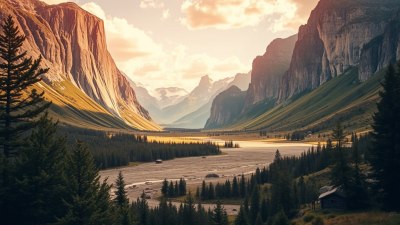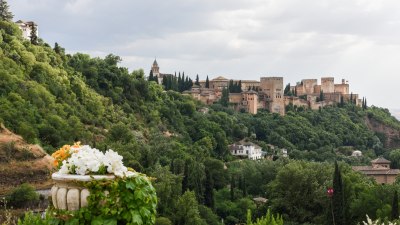Fast Travel Is Overrated Choose the Scenic Route
Explore why taking the scenic route enhances travel experiences and enriches adventures.

Image created with Flux Schnell
In an age where speed is prized over experience, the beauty of taking the scenic route often goes unappreciated. Fast travel methods, whether via planes, trains, or automobiles, offer convenience and time savings, but they often strip away the richness of the journey. Taking the scenic route allows one to truly engage with the terrain, culture, and people of a region. This article explores the various benefits of choosing the scenic route over fast travel, enriching your travel experiences significantly.
The Essence of Travel
Travel has long been defined by the journey rather than the destination. While there’s an undeniable thrill in reaching a famous landmark or city, the experiences garnered along the way are often what resonate deeply within our memories. Fast travel, defined by its swiftness and efficiency, may seem appealing, but it often bypasses the hidden gems that define a region. The scenic route can transform a mundane trip into an adventure filled with discovery and personal growth.
Engagement with Nature
One of the most compelling reasons to choose the scenic route is the opportunity to engage with nature. Highways and expressways often cut through landscapes without acknowledging their beauty. By taking backroads or coastal paths, travelers can revel in the diverse ecological systems, breathtaking vistas, and local wildlife that flourish outside the confines of a traditional travel route. Nature serves as a reminder of the world’s grandeur and complexity. With every twist and turn, travelers are treated to views that change in an instant, a true testament to the beauty of the earth. The mountains, valleys, rivers, and forests become not mere backdrops, but integral components of the travel experience.
Discovering Local Cultures
In our fast-paced world, local cultures often remain unnoticed or misunderstood. The scenic route offers an invaluable opportunity to slow down and engage with communities. This is where the heart and soul of a region are found—through local markets, festivals, artisanal crafts, and cuisine. By stepping outside your car and into a small-town café or farmer's market, you can interact with locals, hear their stories, and forge connections that might not be available in the hustle and bustle of urban areas. Each interaction deepens your understanding and appreciation of the local culture, transforming your travel into an enriching educational experience.
Culinary Adventures
Food is a vital part of culture, and traveling the scenic route presents countless opportunities to explore unique culinary delights. Instead of dining at chains located near highways, taking backroads allows you to stumble upon local diners, food trucks, or family-run restaurants. These hidden gems often serve up dishes that reflect the region’s history and culture. Whether it’s a roadside barbecue joint in Texas, a seafood shack in Maine, or a quaint bakery in France, every meal becomes a culinary adventure. You gain more than just a meal; you gain insight into the flavors and traditions of the area.
The Joy of Serendipity
Planning every aspect of a journey can strip away spontaneity and lead to missed opportunities. The scenic route invites a more relaxed approach to travel, allowing time for serendipitous moments: an unexpected roadside attraction, a captivating viewpoint, or even an impromptu chat with fellow travelers. These moments, often unplanned, create lasting memories that shape the contour of your adventures. By giving up the urgency of fast travel, one opens a world of delightful discoveries. Whether it’s a quirky sculpture or a breathtaking sunset, the scenic route is a canvas for unforgettable experiences.
Appreciating Time
Society often equates time with productivity, but travel should be about moments, not minutes. Choosing to travel the scenic route provides the luxury of time. Instead of racing from point A to point B, you can take the time to relish each sight, sound, and smell along your path. The purpose of travel evolves from simply reaching a destination to savoring the experience itself. This appreciation leads to improved mental well-being, as travel becomes less about stress and hurry and more about joy, wonder, and connection. Whether pausing to photograph a majestic landscape or enjoying the silence of a serene spot, time becomes a friend, rather than a foe.
The Mental Health Benefits
The act of choosing the scenic route can have considerable positive impacts on mental health. Studies indicate that spending time in nature lowers stress, reduces anxiety, and improves mood. The scenic route invites travelers to breathe in fresh air, bask in the sun, and immerse themselves in natural beauty—all contributing to better psychological health. Instead of being confined within the sterile environment of transportation hubs, taking a leisurely drive through the countryside or along a pristine coast is shown to elevate well-being and foster relaxation. By integrating these moments of nature into travel, one can return home not just with memories, but a renewed spirit.
Environmental Appreciation
Modern fast travel often leads to greater environmental strain, contributing to carbon emissions and habitat destruction. However, the scenic route encourages a more mindful and eco-friendly approach to travel. Many scenic routes promote slower travel, which is more sustainable. This way, travelers often become more aware of and appreciate their surroundings, leading to a desire to protect them. By choosing routes that emphasize conservation and preservation, you can travel responsibly and help protect the natural beauty that makes these journeys worthwhile.
Building Resilience and Creativity
Travel is not just about leisure; it also provides unique opportunities to challenge oneself and grow. By choosing a slower pace, travelers are encouraged to problem-solve, adapt, and connect with their surroundings in genuine ways. Whether it’s navigating a detour or engaging in a conversation with a local, such experiences foster resilience and creativity. Unforeseen challenges often stimulate inventive solutions and out-of-the-box thinking, skills that are invaluable, not merely on the road, but in everyday life. The scenic route invites the unexpected and, in doing so, fosters personal growth.
Fast travel may offer expedience, yet it inevitably comes at a cost—the fullness of experience. Opting for the scenic route honors the essence of travel by embracing the journey, engaging with new cultures, appreciating nature, and rekindling our mental well-being. The richness found in slow experiences is immeasurable and worthwhile, offering travelers the chance to create deeper connections and transform their understanding of distance and time. So, the next time you plan a trip, consider taking the long way around—your journey awaits on the scenic side.











